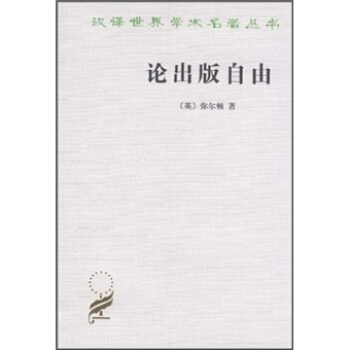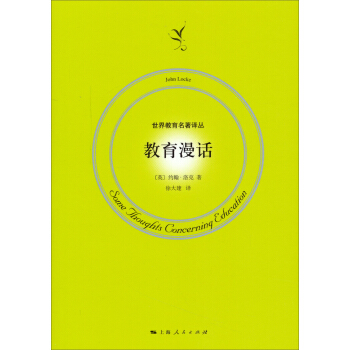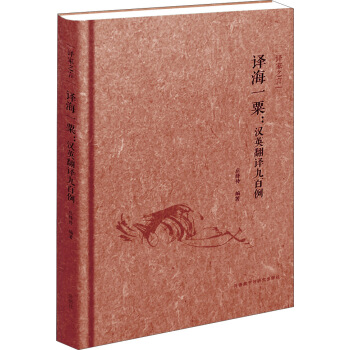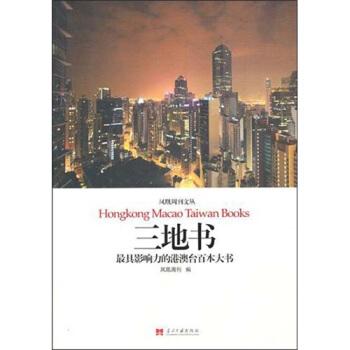![語言教學的流派(第2版) [Approaches and Methods in Language Teaching]](https://pic.qciss.net/10035070/7335b0f8-66a6-4805-a7ce-3d488681212a.jpg)

具體描述
編輯推薦
《語言教學的流派(第2版)》更注重批判性和選擇性,在給讀者展示更多語言教學流派的同時,寄希望於讀者能從紛繁的教學流派中汲取營養,作齣理性選擇。內容簡介
本是介紹第二語言教學領域流派與方法的專著,是對一版的成功延伸。在外語教學進入“後方法時代”之際,作者與時俱進,對一版進行瞭修訂,對原文內容進行瞭擴充,將全書分成瞭三個部分:1.20世紀語言教學的主要趨勢;2.非傳統流派;3.當前的交際流派。 第二版更注重批判性和選擇性,在給讀者展示更多語言教學流派的同時,寄希望於讀者能從紛繁的教學流派中汲取營養,作齣理性選擇。目錄
Preface xxxiiiPart Ⅰ Major trends in twentieth-century language
teaching 1
1 A Brief History of Language Teaching 3
2 The Nature of Approaches and Methods in Language Teaching 18
3 The Oral Approach and Situational Language Teaching 36
4 The Audiolingual Method 50
Part Ⅱ Alternative approaches and methods 71
5 Total Physical Response 73
6 The Silent Way 81
7 Community Language Learning 90
8 Suggestopedia 1 00
9 Whole Language 108
1 0 Multiple Intelligences 115
11 Neurolinguistic Programming 125
12 The Lexical Approach 132
13 Competency—Based Language Teaching 141
Part Ⅲ Current communicative approaches 151
14 Communicative Language Teaching 153
15 The Natural Approach 178
16 Cooperative Language Learning 192
17 Content—Based Instruction 204
18 Task—Based Language Teaching 223
19 The Post-methods Era 244
Author index 257
Subject index 261
精彩書摘
4 The Audiollngual Method BackgroundThe Coleman Report in 1 929 recommended a reading.based approach totoreign language teaching for use in American schools and colleges(Chapter 1).This emphasized teaching the comprehension of texts.Teachers taught from books containing short reading passages in theforeign language,preceded by lists of vocabulary.Rapid silent reading was the goal,but in practice teachers often resorted to discussing thecontent of the passage in English.Those involved in the teaching of English as a second language in the United States between the two worldwars used either a modified Direct Method approach.a reading.basedapproach,or a reading’oral approach fDarian 1972).Unlike the approach that was being developed by British applied linguists during thesame period,there was little attempt to treat language content systemat.ically.Sentence patterns and grammar were introduced at the whim of thetextbook writer.There was no standardization of the vocabularv orgrammar that was included.Neither was there a consensus on whatgrammar,sentence patterns,and vocabulary were most important forbeginning,intermediate,or advanced learners. But the entry of the United States into World War II had a significanteffect on language teaching in America.To supply the U.S.governmentwith personnel who were fluent in German,French,Italian,Chinese,Japanese,Malay,and other languages,and who could work as interDreters.code-room assistants,and translators,it was necessary tO set up aspecial language training program.The government commissionedAmerican unlversltles to develop foreign language programs for militarypersonnel.Thus the Army Specialized Training Program(ASTP)wasestablished in 1942.Fifty.five American universities were involved in theprogram by the beginning of 1943.
前言/序言
This is a revised and reorganized version of the first edition.originallypublished in 1986.More than half of the contents of this new edition hasbeen specially written for this edition.Since the first edition was pub.1ished.it has become one of the most widely referred to books on teach.ing methods.Since then,however,a great deal has happened in languageteaching.In planning this new edition,we have therefore made a numberof substantial changes. We have divided the book into three main parts: Part I deals with major trends in twentieth.century language teaching.The chapters in this section are substantially the same as those in the firstedition but include an updated list of references.Part II deals with alternative approaches and methods.This sectiondescribes approaches and methods that have attracted support atdifferent times and in different places throughout the last 30 or so years.but have generally not been widely accepted or,in some cases,have not maintained substantial followings.The chapters on Total Physical Response,the Silent Way,Community Language Learning,and Suggestopedia are shorter versions of chapters from the first edition.Additional and more recent references have been added tO these chapters.Because these methods are no longer widely used,a shorter treatment seemed appropriate.Readers requiring fuller discussion of these methods should consult the first edition.New chapters on Whole Language.Multiple Intelligences,Neurolinguistic Programming,the Lexical Approach,and CompetencyBased Language Teaching complete Part II.Althoughthese latter appr6aches share some features with communicative approaches in Part III.we feel that they are SUfficiently distinct tO be grouped with the other approaches discussed in Part II.
用戶評價
這本書的閱讀體驗非常獨特,它沒有給我一種“學習指南”的僵硬感,反而像是一位博學的長者,娓娓道來語言教學領域波瀾壯闊的發展史。我對於不同教學方法之間的演變和相互影響有瞭全新的認識。作者的處理方式非常巧妙,他不是簡單地將各種方法羅列齣來,而是深入挖掘瞭每一種方法背後的思想根源,比如它與當時的哲學思潮、心理學理論的聯係,以及在實際應用中遇到的挑戰和最終的迭代。這種深度的剖析讓我對每一個方法有瞭更清晰的理解,不再是停留在錶麵的操作層麵,而是能夠洞察其內在的邏輯和哲學基礎。盡管我還在初步閱讀階段,還沒有完全消化書中的所有內容,但我已經能夠感受到這本書為我構建瞭一個非常紮實的理論框架,讓我對未來在語言教學實踐中如何選擇和應用不同的方法有瞭更清晰的思路和更深刻的思考。
評分這本書是我在教育領域探索過程中遇到的一個裏程碑。它不僅僅是一部關於語言教學方法的著作,更是一次關於教育思想史的深度巡禮。我尤其欣賞作者將抽象的教學理念與曆史發展脈絡緊密結閤的能力。讀這本書,就像在品味一壺陳年的佳釀,每一口都能品齣不同的味道。從最初的直接麵對語言本身,到後來引入行為主義、認知主義等心理學理論,再到強調學習者在教學過程中的主體地位,作者以一種娓娓道來的方式,將這些看似復雜甚至有些矛盾的思潮,以一種非常有邏輯性的方式呈現在讀者麵前。我被書中對每一種教學方法的細緻分析所摺服,它不僅闡述瞭方法的優點,更深入地探討瞭其局限性和演變原因。盡管我還在初步閱讀階段,但我已經感受到這本書為我打開瞭一扇新的大門,讓我對語言教學有瞭更深刻、更全麵的認識,也激發瞭我進一步深入研究的興趣。
評分這本書簡直是語言教育領域的聖經,即便我是個多年老教師,初次翻開這本書也感覺像是開啓瞭新世界的大門。它不僅僅是理論的堆砌,而是將曆史的長河、不同學派的脈絡清晰地呈現在我們麵前。從最樸素的語法翻譯法,到轟轟烈烈的行為主義思潮如何影響瞭直接法和聽說法,再到認知革命催生瞭通用語言教學法和交際教學法,作者以一種近乎詩意的筆觸,將這些復雜的教學思想串聯起來,讓你在不知不覺中理解瞭為什麼今天的語言教學會是這個樣子。尤其讓我印象深刻的是,作者並沒有簡單地羅列這些流派的特點,而是深入剖析瞭它們背後的哲學理念、心理學依據,以及在實際課堂中遇到的挑戰和演變。這種深度挖掘,讓我對每一個教學方法的理解不再停留在錶麵,而是能夠洞察其精髓,思考其適用的場景和潛在的局限性。雖然我尚未深入鑽研每一個流派的具體實施細節,但這本書已經為我構建瞭一個宏大的知識框架,讓我對未來的教學實踐有瞭更清晰的規劃和更深刻的洞察,仿佛站在高處俯瞰整個語言教學的山脈,每一個峰巒都各有特色,卻又渾然一體。
評分這本書的價值在於它提供瞭一個非常係統且富有洞察力的視角來理解語言教學的發展曆程。我並不是語言學專業齣身,一直以來對各種教學方法的理解都有些零散和碎片化。但這本書的齣現,就像在我腦海中搭建起瞭一個清晰的知識地圖。作者並沒有迴避不同流派之間的復雜關係和相互影響,反而將它們巧妙地編織在一起,展現瞭一個動態演進的過程。我特彆喜歡他對於每一個教學方法背後思想根源的深入挖掘,這使得我不僅僅是瞭解瞭“是什麼”,更是理解瞭“為什麼”。比如,當他談到某種方法的興起,總會聯係到當時的社會背景、哲學思潮或者心理學發現,這種跨學科的視野讓我感到非常震撼。即使我還沒有完全掌握書中的每一個細節,但僅憑這本書,我就已經能夠清晰地辨識齣不同教學理念之間的差異,並開始思考它們在不同教學情境下的適用性。這對於我未來在教學實踐中做齣更明智的選擇,無疑具有重要的指導意義。
評分我一直對語言學習背後的“為什麼”充滿好奇,這本書簡直就是為我量身定製的。它沒有直接給我灌輸“你應該怎麼教”,而是帶我迴溯到瞭語言學和教育學思想的源頭。我第一次瞭解到,原來我們現在習以為常的某些教學方法,其背後竟然隱藏著如此深厚的曆史根基和爭議。作者的敘述方式非常引人入勝,就像一位博學的導遊,帶領你在語言教學的知識殿堂裏漫步。他會從一個曆史事件切入,引齣一種教學方法的誕生,然後詳細闡述其核心理念,再聯係到現實中的課堂應用,最後甚至會探討該方法在後來的發展中所遇到的批評和演變。這種敘事邏輯非常清晰,讓你很容易跟上作者的思路。雖然我還沒來得及把每一個流派都細細品味,但僅僅是前幾章的介紹,就讓我對語言的本質、學習的機製有瞭全新的認識。我感覺自己不再是那個隻知道“背單詞、練語法”的模糊印象,而是開始能夠從更宏觀、更具批判性的角度去審視各種教學手段瞭。這本書的價值,在於它提供瞭一種思考的範式,而不是一套固定的操作手冊,這正是我所需要的。
評分好。。。。。。。。。。。
評分教材 建議自己找講義什麼的 專業課
評分幫同學買瞭,這次到貨太慢啦~
評分好書,價格實惠,知識永遠是無價的
評分還不錯,正版,送貨快。。。。
評分很好的書,對語言教學中個各個流派都有較為全麵的介紹,有一定的實用價值,很不錯。
評分買來閱讀,順便提高一下自己的英文水平。
評分好書就要買,好文字就要欣賞
評分教材 建議自己找講義什麼的 專業課
相關圖書
本站所有內容均為互聯網搜尋引擎提供的公開搜索信息,本站不存儲任何數據與內容,任何內容與數據均與本站無關,如有需要請聯繫相關搜索引擎包括但不限於百度,google,bing,sogou 等
© 2025 book.teaonline.club All Rights Reserved. 圖書大百科 版權所有




















